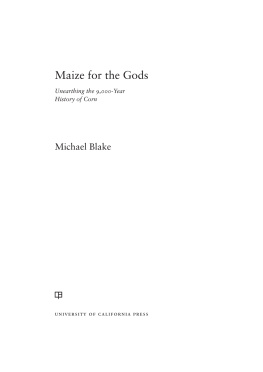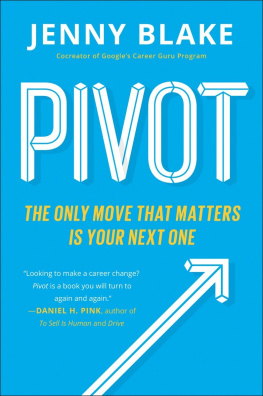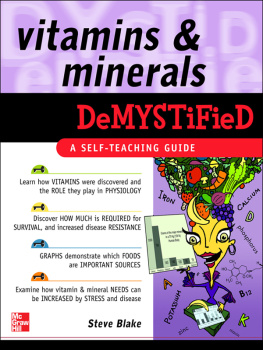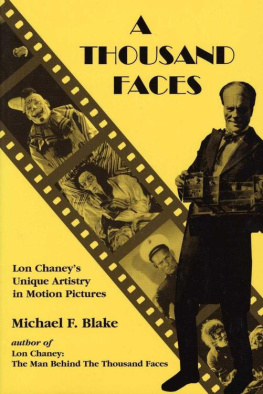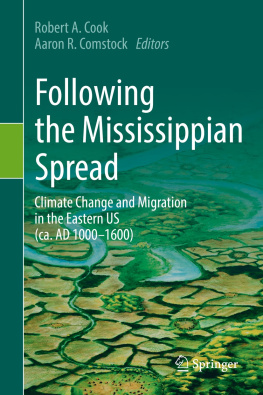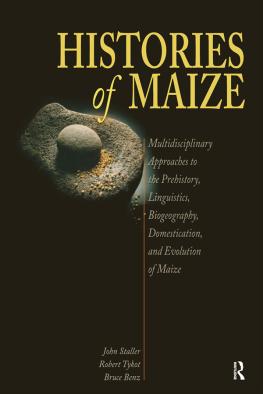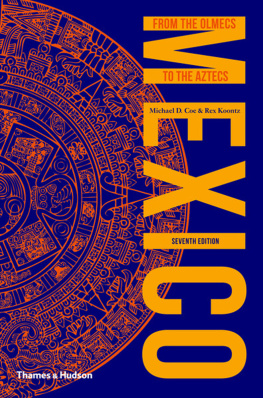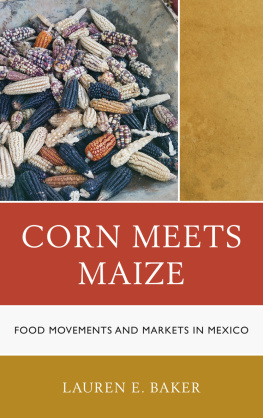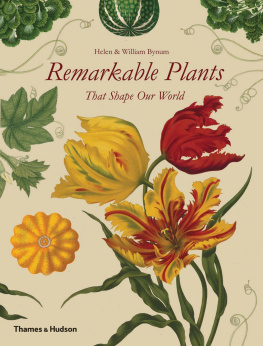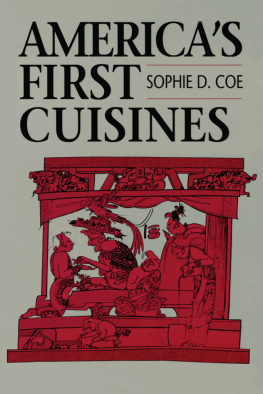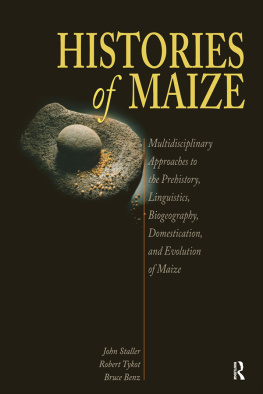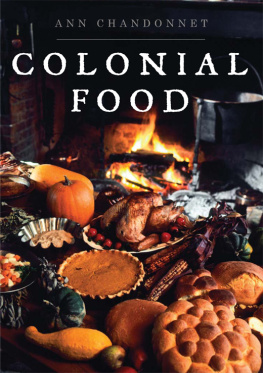Acknowledgments
I conceived of this book as a way to make sense of the vast amount of new archaeological research that was appearing on the history of food and agriculture and, in particular, the history of maizeone of the worlds most successful food crops. So many different lines of evidence were expanding and changing my understanding of the complex and ancient relationships between people and maize that I thought it would be helpful to pull some of the threads together in one place. This idea was sparked by a two-day symposium, held at the Society for American Archaeology meetings in Montreal in 2004, that I co-organized with John Staller and John Hart. The symposium resulted in a massive collection of scientific papers that were published in 2006 in The Histories of Maize, edited by John Staller, Bruce Benz, and Robert Tykot. Building on this publication and the work of a host of other scholars, I started to craft a concise snapshot of what we know about the archaeology, dating, history, genetics, chemistry, technology, and symbolism of maizes originsfrom an archaeologists perspective. What I imagined might take a few months or a year to accomplish wound up taking several years, and even now I feel like Ive only just scratched the surface of this fascinating history.
This book could never have come to fruition without the endless patience and encouragement of Blake Edgar, senior editor at the University of California Press. The extent to which this book is readable is the result of Blakes clear vision and insightful suggestions. I am grateful to both Merrik Bush-Pirkle and Dore Brown for shepherding the project through the exacting final stages of production, and I thank Genevieve Thurston for her superb copyediting.
My preoccupation with the origins and history of maize agriculture has grown out of many decades of research and conversations with a host of colleagues, students, and friends who are too numerous to mention individually. I would be remiss, however, if I didnt acknowledge the generous encouragement, help, and contributions of the following people. Bruce Benz, John Staller, R.G. Matson, Bruce Miller, Gary Coupland, Dana Lepofsky, Margaret Nelson, Ben Nelson, John Hart, and Hannes Dempewolf all provided invaluable intellectual support during the manuscript preparation by reading drafts of chapters or simply discussing ideas about the anthropology and archaeology of agriculture and corn. I thank the two reviewersKarl Taube and Bob Hardwho generously gave of their time to make many helpful suggestions for improving the manuscript. The ideas and themes that I explore in this volume are the direct result of conversations I had with colleagues while excavating ancient village sites, working in the lab, writing publications and reports, and planning research. I am especially grateful to my friend and colleague John Clark and to the late Tom Lee Jr. and Gareth Lowe of the New World Archaeological Foundation-Brigham Young University, both of whom have generously supported the work John and I carried out in Chiapas over many years. I thank Barbara Voorhies, Brian Hayden, Vicki Feddema, Richard Lesure, David Cheetham, Rob Rosenswig, Brian Chisholm, Mike Richards, Diana Moreiras, Ken Hirth, David Webster, Lindi Masur, John Smalley, Cecilia Canal, Nadine Gray, Virginia Popper, Hendrik Poinar, John Hart, Hugh Iltis, Robert Bird, Michael Moseley, Richard Burger, Ruth Shady, Mary Pohl, Sonia Zarrillo, Jonathan Haas, Steven LeBlanc, Jane and David Kelley, Kevin Hanselka, Scott Raymond, Gary Crawford, and Mario Rivera for generously sharing their ideas and data.
The maps in this volume are the result of the creative and technical skills of Nick Waber, who never failed to solve a mapping problem with speed and wit. Many are based on data gathered and produced as part of the Ancient Maize Map, an online database that tracks the dated samples of maize throughout the Americas. I thank all my generous colleagues in a dozen different countries who have contributed to this database over the past eight years and am enormously grateful to the mapping team that helped build it: Bruce Benz, Sue Formosa, Kisha Supernant, Alex Wong, Diana Moreiras, and the amazing duo of Nick Jakobsen and Ryan Wallace, the incomparable programmers from Culture Code. For their contributions of photos and drawings to help illustrate this volume, I am especially grateful to Kent Flannery, Joyce Marcus, John Doebley, Tony Ranere, Ken Hirth, Ryan Williams, Paul Minnis, Chris Hastorf, Fred McColly, John Doebley, Bruce Benz, David Cheetham, Karl Taube, Hector Neff, Sonia Zarrillo, and Cory Kratz.

